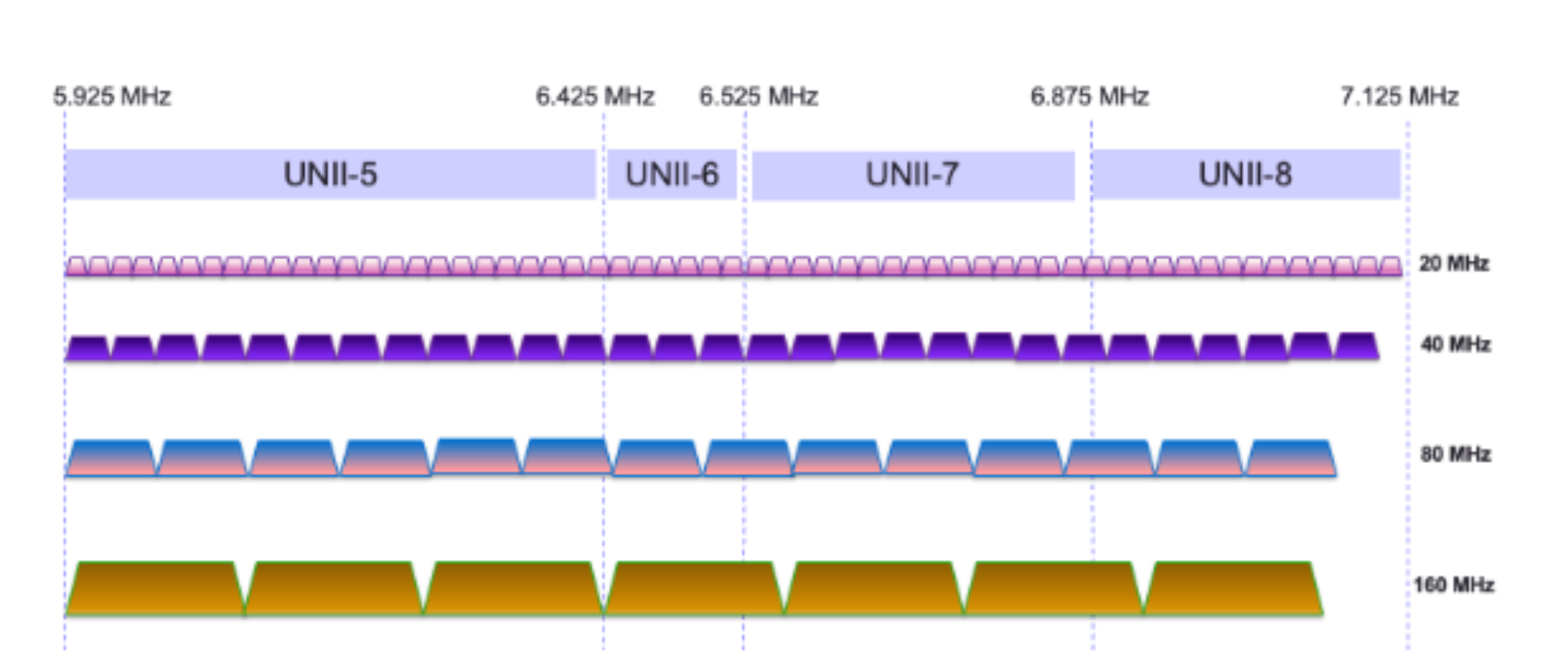How Wi-Fi 7 will boost business: An interview with the Wireless Broadband Alliance
We spoke to Tiago Rodrigues, CEO, Wireless Broadband Alliance (WBA) about the capabilities of Wi-Fi 7

Wi-Fi 7 is the latest generation for wireless devices. But what are the capabilities and benefits of this new technology, and how can businesses take advantage in innovative new ways?
TechRadar Pro spoke to Tiago Rodrigues, CEO at the Wireless Broadband Alliance (WBA) about why Wi-Fi 7 beats its predecessor and what the future of wireless broadband holds.

- In a nutshell, what is Wi-Fi 7, how does it work, and how does it differ from previous incarnations?
Wi-Fi 7 is faster, more spectrum efficient and more secure than every previous Wi-Fi generation. It also adds breakthrough features that are ideal for new and demanding applications, such as immersive AR/VR/XR.
For example, Wi-Fi 7 is three times fast than Wi-Fi 6 because it supports 4K QAM and channel widths up to 320 MHz versus 160 MHz for Wi-Fi 5 and Wi-Fi 6. These upgrades make it ideal for bandwidth-intensive applications such as gigabit Wi-Fi in homes with multiple devices streaming HD or 4K video simultaneously.
WBA just published Get Ready for Wi-Fi 7: Applying New Capabilities to the Key Use Cases, which provides a great overview of these and other ways it will transform how people worldwide live, work and play. The report is available as a free download by clicking here.
- What frequency bands does Wi-Fi 7 use?
Wi-Fi 7 uses the traditional 2.4 and 5 GHz bands, as well as the new 6 GHz band, which is now available in 54 countries. This means Wi-Fi 7 devices now have access to an additional 1200 MHz, which is more than double the usable channels of the 2.4 GHz and 5 GHz channels combined.
So, it effectively triples the available spectrum available for Wi-Fi 7 in countries that have opened up all 1200 MHz for unlicensed use, such as Brazil, Saudi Arabia and the U.S. The new spectrum also reduces both interference and latency, which directly improves application performance and user experiences.
Are you a pro? Subscribe to our newsletter
Sign up to the TechRadar Pro newsletter to get all the top news, opinion, features and guidance your business needs to succeed!
Most Wi-Fi 7 devices also support legacy generations of Wi-Fi on the 2.4 and 5 GHz radios. However, one key difference of using the 6 GHz frequency band for 802.11ax is there is no need for backward compatibility with previous generations. 802.11a/b/g/n/ac radios operate at either 2.4 or 5 GHz, not 6 GHz, so backward compatibility is not possible and not needed.

- Wi-Fi 7 uses the new Multi-Link Operation (MLO) - how does this work and what can users expect from this new feature?
As the name implies, MLO aggregates multiple links at 2.4, 5 and 6 GHz. It can quickly move critical applications to the optimal band using seamless switching between links. This enables Wi-Fi 7 devices to avoid interference and access Wi-Fi channels without delaying critical traffic. This and other new features also make Wi-Fi 7 ideal for immersive XR/AR/VR, online gaming and other consumer applications that require high throughput, low latency, minimal jitter and high reliability.
MLO is an attractive option for enterprise vendors because of the cost savings, low maintenance and speed of deployment. As a result, MLO might provide that paradigm shift for enterprise vendors to deploy more Wi-Fi backhaul in their indoor and outdoor deployments, such as multi-dwelling units (MDUs) and large public venues.
There are two MLO modes:
> MLO STR mode with 5 GHz+6 GHz bands could support enterprise backhaul throughput needs (~10 Gb/s). Both Wi-Fi 6E and Wi-Fi 7 features (6 GHz AFC, wider channel bandwidths, 4K QAM, MLO, etc.) together can contribute to the wider adoption of Wi-Fi backhaul.
> MLO enhanced multi-link single-radio (eMLSR) mode could provide the link redundancy options for seamlessly switching between the Wi-Fi backhaul links. For example, on a 5 GHz + 6 GHz eMLSR backhaul link, the MAC scheduler can dynamically switch the primary operating link to the less congested link (e.g., if more clients are connected to the 6 GHz home link, then switch the backhaul to 5 GHz).
- Wi-Fi 7 promises greater speed and bandwidth, but what other advantages can users expect from deploying the new technology? What incentives are there to upgrade?
Wi-Fi 7 will enable consumer, enterprise, Industry 4.0, medical, smart city and other applications that are impractical or impossible with other wired and wireless technologies, providing twice the bandwidth and three times the speed of Wi-Fi 6, deterministic network support. However, there are other really key drivers for Wi-Fi 7 use including:
> New location-based techniques to deliver enhanced customer experience and analytics
> Wi-Fi sensing that blends seamlessly with the environment
> IoT combined uses cases featuring Wi-Fi with HaLow, LoRaWAN, Matter and UWB
> Further convergence with 5G providing backhaul for Wi-Fi 7 deployments.
> More 5G services over Wi-Fi 7, such as expanding adoption of Wi-Fi calling
- What are the biggest challenges for successful Wi-Fi 7 deployment - both for the WBA, other industry bodies, and end-users?
WBA believes a Wi-Fi 7 Industry Trials Program is pivotal and is actively collaborating with its members to conduct field trials in real-world Wi-Fi 7 networks. These trials are open to all interested industry players and are a crucial platform for mobile device and AP vendors, operators, and service enablers to collectively test Wi-Fi 7 capabilities in key deployments scenarios.
In these trials, participants will gain invaluable hands-on, real-world insights into deploying Wi-Fi 7 across operator, residential, and enterprise networks. As with its Wi-Fi 6 trials, the WBA will share comprehensive reports that offer indispensable knowledge and serve as a reference for industry stakeholders.
- There are a wide-range of use-cases across different fields and industries, like education, medical, industrial, and hospitality. Can you give one or two specific examples of how a business might use the technology to improve or support their operations?
For starters, Wi-Fi 7 utilises the unused capacity in a channel, making it ideal for many use cases such as:
> Ultra-low deterministic latencies to take user experiences to the next level and enable new enterprise use cases
> Less latency and jitter for video applications such as telecommuting.
> Immersive AR/VR and the metaverse
> Cloud gaming and managing of packets depending on environment conditions, such as congestion
> Industry 4.0, including freeing factories from the limitations of SCADA
> New applications like emergency services over Wi-Fi
- How will Wi-Fi 7 complement other new technologies that are starting to be adopted by businesses – things like VR and AR?
Most of the latest-generation devices from Apple, Meta and others operate only in 6 GHz, making network design and delivery part of the business’s network planning.
- Some businesses may have only recently moved to Wi-Fi 6 (or Wi-Fi 6E) or have been considering upgrading – what advice do you have for them?
Wi-Fi’s low cost per bit makes it a no-brainer upgrade. Wi-Fi 7 is the latest generation and thus enables future proofing the network architecture even further.
- Are there any upgrades businesses need to make to their existing infrastructure to be able to take advantage?
Typically networks are sustained by backhaul systems that can evolve over time. However, features such as MLO make it likely that Wi-Fi 7 will be the generation leveraging existing resources to deliver the best experience. Hence, upgrades will be mostly on the network side: APs and controllers (physical / cloud operated).
- Wi-Fi 7 is only the latest step in the evolution of wireless broadband technology. What do you feel can be improved for Wi-Fi 8?
Early research shows future directions for Wi-Fi 8 and beyond focusing on service availability and optimal experience when using unlicensed spectrum. This will be a natural step to augment the new spectrum available and any learning from Wi-Fi 7’s massive rollout.
- What do you find most exciting about the roll-out of Wi-Fi 7 and the future of wireless broadband in general?
A new benchmark is being created: OpenRoaming + Wi-Fi 7 + 6 GHz. This allows new market entrants to deliver enterprise/community-grade solutions effectively opening up new markets and leading to growth in global businesses and GDP.
Read more from TechRadar Pro
> How Barracuda aims to keep up with the ever-increasing sophistication of cyberattacks
> Best small business routers: Tested, reviewed, rated
> Wi-Fi 6E vs Wi-Fi 7

Steve is B2B Editor for Creative & Hardware at TechRadar Pro. He began in tech journalism reviewing photo editors and video editing software at Web User magazine, and covered technology news, features, and how-to guides. Today, he and his team of expert reviewers test out a range of creative software, hardware, and office furniture. Once upon a time, he wrote TV commercials and movie trailers. Relentless champion of the Oxford comma.